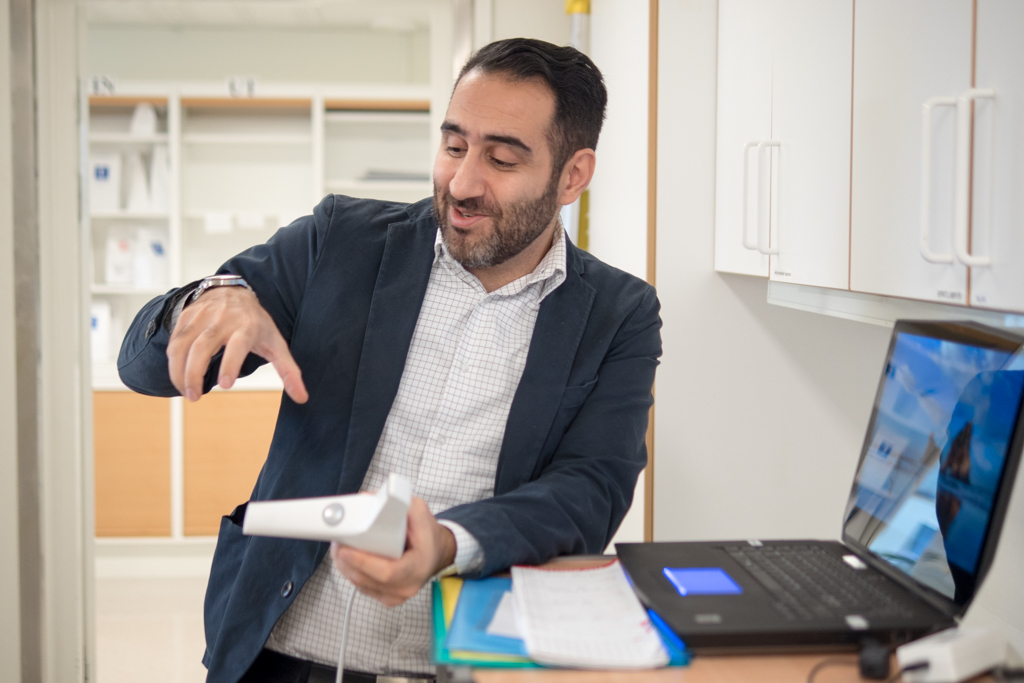In my previous blog post The Importance & Advantages of Digital Dentistry (Part 2), dentist, dental technician, and researcher Michael Braian, talked about digital dentistry and its importance for the dental care, the advantages of a fully digitalized workflow, and how the dental landscape has changed over the past few decades. In this third part, Michael summarises 4 challenges in digital dentistry.
What challenges does digital dentistry bring?
Digital dentistry brings many challenges to both dentists and dental technicians as well as society.
1. There is a large gap between dentists and dental technicians
First of all, when it comes to the use of digital techniques, there is a large gap between dentists and dental technicians. The technicians are steps ahead of the dentists, and many have had a full digital workflow for years; receiving digital impressions, designing the models in a computer software, and sending the digital information to milling machines that create the prosthetic restorations. Many of the dentists, on the other hand, have not yet come this far. Many are still using the conventional techniques, taking moulded impressions of their patients’ teeth and physically transporting the impressions to the dental labs.
In order to truly achieve a fully digitalized workflow in dental care, the dentists need to start using the digital techniques to the same large extent as the technicians. Implementing the use of intra-oral scanners is a big change for many dentists as it challenges the dentists’ digital skills. I think it will happen in the near future but proceed slowly.

2. The plaster model is the holy grail for dental technicians
As much as the dental technicians have digitalized their workflow, there is always the opinion amongst technicians that the plaster model is the holy grail. This is because, in conventional dentistry, the final result of the prosthetic restoration is completely dependent on the plaster model. If the plaster model breaks, the entire procedure needs to be repeated all over again.
As the digital techniques are entering the labs, technicians today are not yet sure which one is their new holy grail. Is it the scanner? The computer software? The milling machine? The 3D-printer? When it comes to the digital techniques, there are so many different parameters to take into consideration, making it difficult to decide. Right now, this is a hot topic in digital dentistry research, and there is a big challenge for technicians to determine their new holy grail – or simply accept that there no longer is one?
3. The use of intra-oral scanners require high digital skills and precision
A third challenge is the use of intra-oral scanners. Intra-oral scanners are excellent tools for simplifying the workflow for dental professionals, but they require high digital skills and precision. It is crucial for dentists to know exactly how to use the intra-oral scanner to get a perfect digital file to hand over to the dental lab. If the digital file does not correspond correctly to the patient’s mouth, the final result of the prosthetic restoration can lead to problems. Unlike taking a moulded impression of the patient’s teeth, which allows for dentists to make minor mistakes as they can be fixed by the dental technician, a digital impression does not allow for any mistakes at all.
This means that if a dentist sends a mediocre digital impression to a technician, for example, an impression with an incorrect index between the maxilla and the mandible, the dentist will also receive a mediocre prosthetic restoration. In the end, the patient may end up with a prosthetic restoration that doesn’t fit their mouth, which is clearly not desirable.
The challenge here is for the digital techniques to be implemented early in the educational dentistry programs, but also practising; dentists need to be trained in how to use the intra-oral scanners correctly and continuously practice their digital skills. When the dentists learn to master the intra-oral scanning technique, they will also gain a better understanding of the complete process of digital dentistry. This way, they will also help close the gap between dentists and technicians.

4. Maintaining a balance between simplicity, speed, and reliability
Another challenge is that digitalization, in general, put higher demands on simplicity and speed. Our entire society is permeated by the digitalization, and it is not for nothing we call our younger generation “the click-and-go generation”. Today, we expect things to happen quickly and easily. We don’t have the time to wait, and there is no room for errors. I like to call this the “digital tolerance” – and digital dentistry is no exception. The digital techniques; intra-oral scanners, lab scanners, milling machines, and 3D-printers all need to work seamlessly.
However, as technology develops rapidly, the manufacturing companies seem to move a bit too fast. Instead, they need to stabilise their hardware and software so that the digital techniques maintain their reliability. This is a great challenge, and also a responsibility they carry, to ensure quality and help simplify the workflow for dental professionals.
To sum it up, there are many challenges in digital dentistry. But I think, in the future, the digital techniques will become better, the gap between dentists and dental technicians will become smaller, the removal of the plaster model as the holy grail will become a fact, and the cooperation between manufacturing companies and clinics and labs will become stronger – all leading to amazing gains in efficiency and accuracy as well as patient benefits.
This was the third part out of four in our video blog series with Michael Braian about digital dentistry. The interview continues in our fourth part. Also, read:

